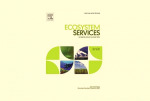Ecosystem services in cities: Towards the international legal protection of ecosystem services in urban environments
Global population will reach 9.7 billion by 2050, which will result in a majorly urbanised world. In order to attain to international targets concerning biodiversity such as the Aichi Biodiversity Targets, there is an evident need in introducing and restoring biodiversity in urban areas. Urban nature can enhance ecosystem services, increase well-being in urban dwellers, reduce the amount of urban sprawl and thus can aid climate mitigation and adaptation.
Biodiversity provides many ecosystem services in cities that are beneficial to human well-being including adaptation to the effects of climate change and positive effects of nature on human health. Rapid urbanization however is causing an adverse impact on biodiversity and the ecosystem services they provide. Protecting and restoring urban biodiversity and ecosystem services can increase human well-being of the rapidly increasing urban population. Today, however, the international biodiversity conservation practice mainly focuses on rural areas, and not on urban conservation and restoration. Within city scale, there are several opportunities to green urban living, such as green infrastructure and urban parks and nature reserves. This paper investigates the current scientific practices for promoting and protecting ecosystem services in urban areas. Secondly, the authors review and assess the legally binding instruments on biodiversity at the international and EU level in order to see if there are sufficient existing mechanisms for protection of ecosystem services in urban areas. Thirdly, the paper elaborates on the Aichi Targets in order to explore whether or not these targets are enough to facilitate the protection and enhancement of ecosystem services in urban areas as swiftly as they are needed.

